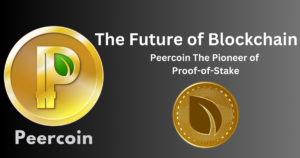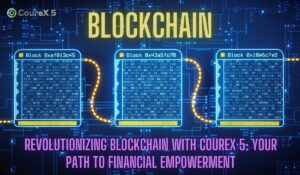The Ultimate Future of Blockchain: Peercoin The Pioneer 0f Proof-of-Stake


The crucial invention of Peercoin is its invention of evidence- of- stake, an indispensable agreement protocol to Bitcoin’s evidence- of- work. Blockchains are secured by proving the consumption of a expensive limited resource electricity.
Due to the cost effective nature of evidence- of- stake’s time grounded agreement rules, Peercoin is able of allowing any network connected computer to share in the blockchain’s security process. This effectiveness strengthens Peercoin by growing the number of security providers and icing that security can be sustained over the long- term.
Given that the blockchain is inflexible by its veritably nature and all recorded data is stored ever, chain bloat becomes an raising problem at advanced operation situations which harms both security and the capability of the network to measure.
To save the unsure security of the blockchain and insure its capability to gauge to global operation situations, Peercoin’s formulators acclimatized the blockchain and its economics to fulfill the specific part of base subcaste agreement network.
Cryptocurrencies must have a distribution wide enough to insure that the overall coin force doesn’t get concentrated into the hands of too many people.
However a problem exists for blockchains that are run purely on Proof- of- Stake, as there’s no easy way to fairly distribute the original coin force. In a pure evidence- of- Stake blockchain network, the entire coin force is generally created by the design author, who also chooses which individualities get to enjoy stake. This distribution system frequently ends in a network with a largely centralized coin force.
To break this problem, Peercoin uses Proof- of- Stake for network security and evidence- of- Work for distribution. evidence- of- Work miners are awarded with new PPC generated by the network. This recently booby-trapped PPC is also vended on exchanges by miners for profit and bought by new stakeholders who can use it to mint blocks by sharing in Proof- of- Stake agreement.
So while Proof- of- Stake provides security directly, Proof- of- Work is designed to do so laterally by strengthening the decentralization of the network through a wider distribution of PPC to new implicit minters.
Effectiveness, sustainability, stoner governance, scalability through modularity, and a fair distribution. All these rates combine to form a long- term inclined blockchain network that’s primarily concentrated on maximizing decentralization.
The prior focus works to secure the unsure, intractable and repression unaffected nature of PPC so that it can forever be calculate upon to satisfy its core part as a distributed medium for securely storing all types of value.
This value can be anything from edict wealth being stored in PPC, to data being stored on the chain in the form of commemoratives, records, or contracts. Anyhow of the type of value that’s being stored, Peercoin was erected with the fundamentals in mind to always insure that your data remains safe and secure.
Peercoin (PPC), also known as Peer- to- Peer Coin, was made by Sunny King and his platoon and released in August 2012. It’s the first blockchain to apply Proof- of- Stake agreement.
The primary alleviation behind the creation of Peercoin was to address a number of perceived failings of Bitcoin, including energy effectiveness, security and sustainability, decentralization and long- term viability.
Basically it was designed as an enhanced relief for Bitcoin. As similar, it was firstly diverged from Bitcoin and uses the same UTXO style blockchain. still, Peercoin’s law was modified to introduce Proof- of- Stake as its primary agreement protocol. The coming section explains how this makes for a better blockchain.
Given that Peercoin uses utmost of the same law, it can fluently port new features from Bitcoin and use any of the supporting structure, including tech advancements like Taproot or Lightning Network. Peercoin is the only evidence- of- Stake blockchain that uses ultramodern Bitcoin law, making it the perfect drop- in relief.
Peercoin also has a devoted community, is laboriously developed, fairly distributed, has low walls of participation, can do everything that Bitcoin does, minus the 13 TWh of energy operation, and it’s not a fiddle.
Peercoin Price Live Data
The live Peercoin price moment is$0.520406 USD with a 24- hour trading volume of$ 35,514.07 USD. We digitalize our Peercoin to USD cost in real- time. PPC is below 2.11 in the recent 24 hours. It has a circulating force of PPC coins and the maximum force isn’t available.
Still, the best crypto currency trading for exchanging in PPC stock are currently MEXC, Uniswap v2, If you want to know where to purchase PPC at the present rate.
What’s the Difference Between Evidence-of-Stake and Evidence-of-Work?

In a evidence- of- Work blockchain, new blocks are created by mining, but in Peercoin’s evidence- of- Stake, new blocks are created by staking. In a evidence- of- Work blockchain, the act of mining involves using computer processing power to break blocks. The miner who solves the block first has the honor of adding that block of deals to the blockchain, earning them new coins as a price for their service to the network.
Eventually, miners are responsible for validating and recycling deals on a blockchain network, and electricity is the scarce resource they use to do this work.
Naturally, miners will essay to break and produce blocks briskly than their challengers in an trouble to earn further prices for themselves. getting faster than the competition requires further processing power, which inescapably requires further electricity to be burned, an incredibly extravagant process.
This process works to secure a blockchain, still it ends up polarizing power over the network with pool drivers, as utmost miners will advance their hash power to a many large mining pools in an trouble to continue earning prices.
Husbandry of scale also play a factor in polarizing Proof- of- Work blockchains, with miners who manage to grow so large that they’re suitable to get better deals on tackle and negotiate better energy prices. They will always outcompete the small home druggies and drive them out of profitability.
Principally, the aged your coins are, the further time they ’ve accumulated sitting in your portmanteau. Coins with a advanced time accumulation have further power to share in producing blocks and securing the network.
After sitting in your portmanteau for 30 days, you’ll have accumulated 3000 “ coin days ”, because each of those 100 coins is 30 days old. These coin days are the factual minting power of your coins. You can suppose of your coin days as being analogous to your hash rate from traditional mining. Accumulating further coin days means you ’re more likely to produce a new block on the chain.
30 days is the minimal time you need to hold your peercoins in your portmanteau before they can come eligible to start minting.However, that timekeeper will reset, If you distribute with your coins.
Every time you produce a block, you’ll earn new peercoins as a price( about 3- 5 annually) and the age of the sharing coins will reset to zero. After 90 days, peercoins will hit their outside minting power. These time limits are all security features designed to polarize minting power and keep the process fair.
Using time as an integral part of Peercoin’s security means that blockchain security becomes affordable. It no longer becomes necessary to consume some scarce resource( like burning electricity), which could be used in a more salutary way.
Why waste electricity at each when a green volition exists that can perform the same function? Time is also a scarce resource. It’s limited. You can not produce further of it, and you can not manipulate it, or speed it up to profit yourself. All you can do is stay, and staying does n’t bring anything except your tolerance.
Minting is extremely simple, because the portmanteau will do everything automatically. The stoner needs to download the portmanteau and deposit some coins. After the necessary 30 days of concoction are accumulated, all that’s left to do is to sometimes open the portmanteau in order to allow it to try to find a new block. Leaving your portmanteau open24/7 will allow it to mint continuously, earning you a advanced periodic chance price. Mint prices are around 3 for periodic minters and up to 5 for nonstop minters.
Peercoin actually uses both Proof- of- Stake and evidence- of- Work. evidence- of- Stake is used for security of the network, while Proof- of- Work is only used as a medium for nonstop distribution of new coins. This continued distribution helps increase decentralization by icing that recently created coins end up on the request where outlanders can buy them.
The USA has strict legislation about crypto. Under the laws of the USA- Peercoin is impeccably legal as it had no ICO, no presale, no allocation to platoon members or authors and no” dev duty” of any kind.
The vast maturity of crypto means still are unrecorded securities due to one or a number of the below listed particulars that beget them to pass the howey test. The law is veritably clear on this content. Given that unrecorded securities are at advanced threat of being targeted by law enforcement, Peercoin’s legal status offers both druggies and exchanges a sense of safety and peace of mind. It’s also an excellent index of long- term viability.
Where can you buy Peercoin?
PPC commemoratives can be traded on centralized crypto exchanges and decentralized exchanges.
What’s the diurnal trading volume of Peercoin( PPC)?
The trading volume of Peercoin( PPC) is$ 95,091.12 in the last 24 hours, representing a-28.20 drop from one day agone and motioning a recent fall in request exertion.
What’s the each- time high for Peercoin( PPC)?
Comparatively, the current price is 94.56 lower than the each- time high price.
What’s the each- time low for Peercoin( PPC)?
The smallest price paid for Peercoin( PPC) is$0.072813, which was recorded on Apr 14, 2022( about 2 times). Comparatively, the current price is advanced than the each- time low price.
What’s the request cap of Peercoin( PPC)?
Request capitalization of Peercoin( PPC) is$ and is ranked# 1227 on CoinGecko moment. request cap is measured by multiplying token price with the circulating force of PPC commemoratives( 29 Million commemoratives are tradable on the request moment).








